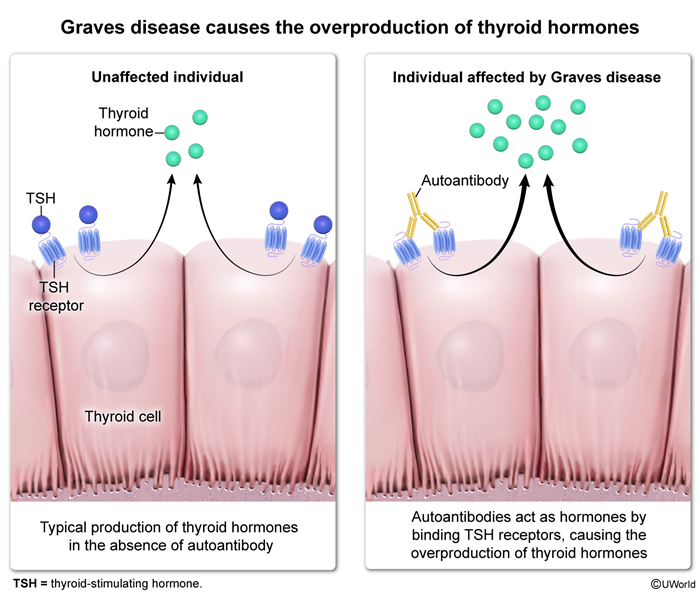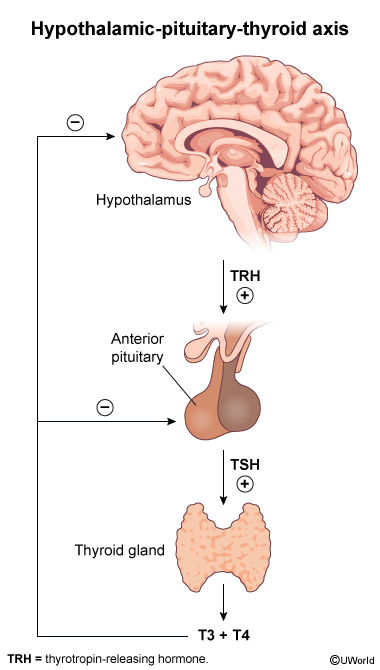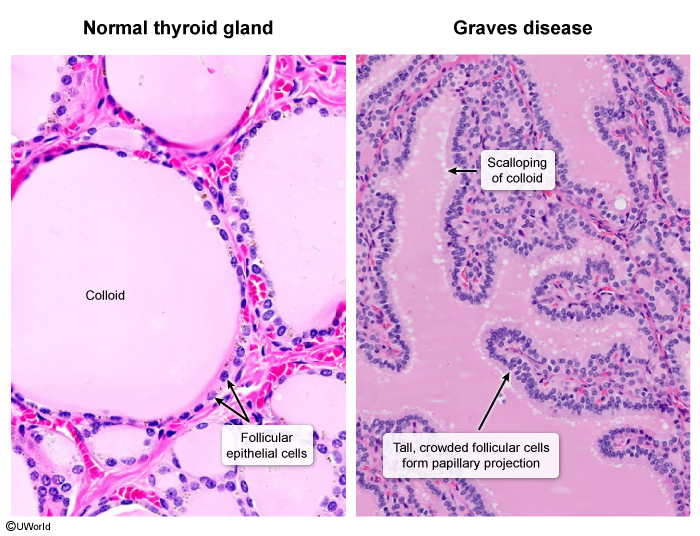Graves Disease
Article Sections
Introduction
Graves disease is an autoimmune disorder that results in hyperthyroidism due to the production of stimulatory autoantibodies directed against the TSH receptor. It is the most common cause of hyperthyroidism (accounting for approximately 80% of cases) and is characterized by diffuse thyroid enlargement, excessive secretion of triiodothyronine (T3) and thyroxine (T4), and associated extrathyroidal manifestations such as ophthalmopathy and dermopathy.
Pathophysiology
Graves disease is driven by the production of stimulatory TSH receptor antibodies (TRAbs). TRAbs bind to extracellular domains on the TSH receptor, a transmembrane G protein–coupled receptor, activating the adenylate cyclase second messenger system. TRAbs can include both stimulatory TRAbs and inhibitory (blocking) TRAbs; the presence of stimulatory TRAbs (thyroid-stimulating immunoglobulin [TSI]) is highly specific for Graves disease.
Stimulatory TRAbs activate the TSH receptor on thyroid follicular cells (
Continue Learning with UWorld
Get the full Graves Disease article plus rich visuals, real-world cases, and in-depth insights from medical experts, all available through the UWorld Medical Library.
Figures



Images
